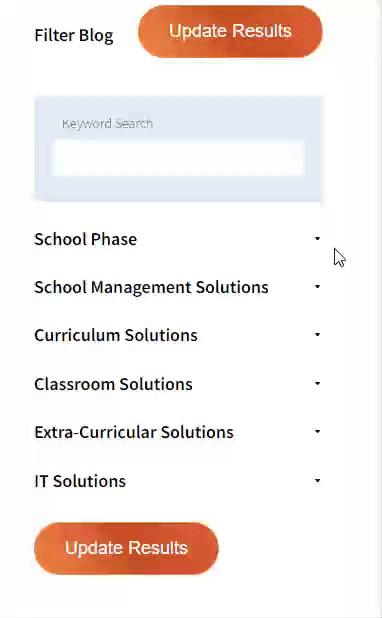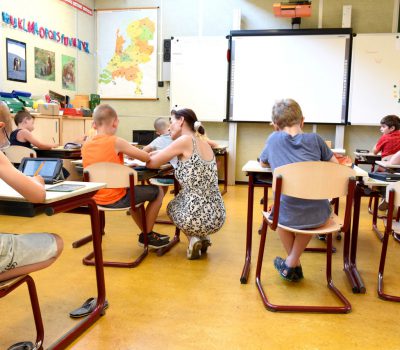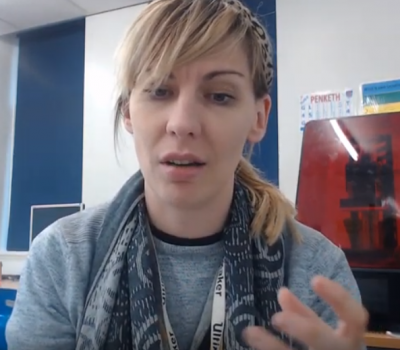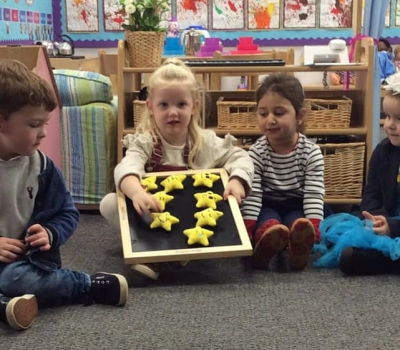


Our team sorts through all blog submissions to place them in the categories they fit the most - meaning it's never been simpler to gain advice and new knowledge for topics most important for you. This is why we have created this straight-forward guide to help you navigate our system.


And there you have it! Now your collection of blogs are catered to your chosen topics and are ready for you to explore. Plus, if you frequently return to the same categories you can bookmark your current URL and we will save your choices on return. Happy Reading!
Personal Development should be just that, personal.
Orla Carlin tested herself to find her strengths then incorporated them into her lessons and way of teaching.

Sometimes we have to be honest and admit that generic PD sessions at times, just don’t cut it. Research now indicates there are many benefits of differentiated PD and ultimately if we apply it for learners, why not apply it to staff training too. After embarking on a Positive Psychology Intervention, I was introduced to the VIA character strengths which helped me identify my own strengths. My top three signature strengths were kindness, love of learning and curiosity.
I decided that at this moment of time, kindness resonated the most and so I started to carry out random acts of kindness daily. I noticed how it became infectious, bringing smiles to those around me, which then prompted others to do act kindly also. Recognising that kindness was not just monetary but could be given through the love languages such as time, acts of service or words of affirmation made it feel even more achievable and relatable.
Then came the idea were I decided to weave it into my lesson plans. I asked students to celebrate kindness, we had a kindness challenge, we talked more about empathy and we praised kind acts a lot more in class. Using my character strengths in this way made me feel elated and somewhat accomplished given the stress of teaching during a pandemic. It became apparent that other teachers could develop creative lessons using their key strengths, in order to improve their wellbeing. As a result of this exploration, I feel that middle leaders can differentiate PD sessions to allow teachers more time to focus on their strengths. Strengths based interventions can shift the power dynamics between leadership and teachers, as focusing on the individual will allow teachers to take more control but in a productive and healthy way.
How can leaders do this?
All in all, PD sessions may be helpful at times, but ultimately when they are designed they are not personalised for each individual. Investing time to allow teachers the option to improve or enhance their practice using character strengths has the potential to increase their active participation and engagement with PD sessions. In this way, middle leaders will get to know their teachers that little bit more and essentially allowing teachers to get to know themselves in a way they may not have explored before.

The author
https://www.tes.com/teaching-resources/shop/Teachtastic2020/Sociology

Read more

Read more

Read more

Read more

Read more

Read more

Read more

Read more


Are you looking for solutions? Let us help fund them! Nexus Education is a community of over 11,000 schools that come together to share best practise, ideas and CPD via online channels and free to attend events. Nexus also offers funding to all school groups in the UK via nexus-education.com


Established in 2011, One Education is a company at the heart of the education world, supporting over 600 schools and academies. Our unique appeal as a provider is in the breadth and synergy of the services we offer, supporting school leaders, teachers and support staff to achieve the best possible outcomes for their pupils and staff.

School Space is a social enterprise that has empowered schools for over 12 years through their profitable and hassle-free lettings services. So far, they’ve generated over £5 million in revenue for education, helping to connect over 200 schools with their local communities.


Unify is an online sales and marketing tool that allows users to create tailored personalised documents in moments.


There’s nothing special about the energy we sell. In fact, it’s exactly the same energy as all our competitors provide. But there is something special about the way we do it. Where others complicate the process, we simplify it. Where others confuse customers with hidden terms, we’re an open book. And where others do all they can to make as much money from their customers as possible, we do all we can to make as little. Everything we do, we do it differently. Our customers are a privilege. One we’ll never take advantage of.


Securus provide market-leading monitoring solutions to safeguard students on ALL devices both online and offline. We also offer a full monitoring service, where we carry out the monitoring on behalf of the school, freeing up valuable staff resources. From the smallest school to large MAT groups, Securus offers safeguarding protection for all!


Bodet Time offers dedicated solutions to education through lockdown alerts, class change systems, PA and synchronised clock systems. Improving time efficiency of the working and school day; ensuring safety through lockdown alerts; increasing communication with customised broadcast alerts.


Robotical makes Marty the Robot - a walking, dancing coding robot that makes programming fun and engaging for learners as young as 5. Our robots come with a full Learning Platform that has complete teaching resources, to make lesson planning a breeze.